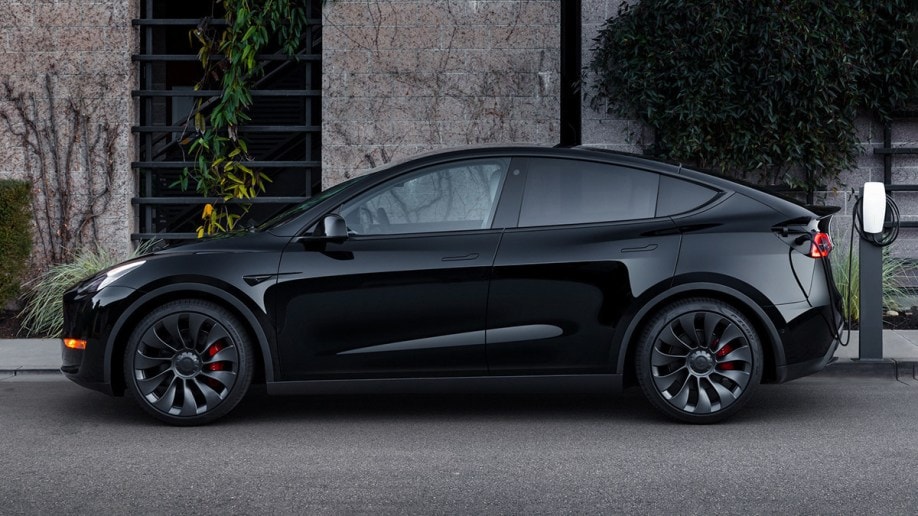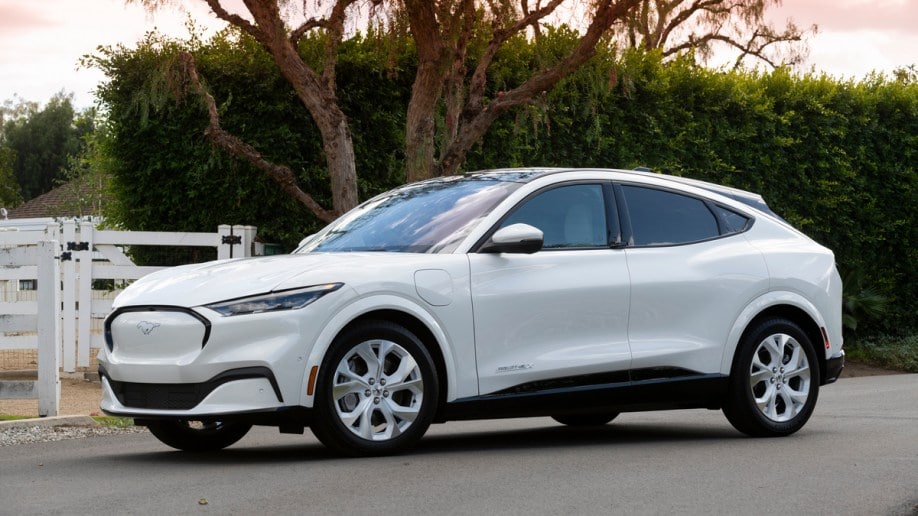
The move shocked an auto industry that has spent several weeks dropping prices largely to accommodate the old rules.
Related: How Do Electric Car Tax Credits Work?
It will make many vehicles that didn’t qualify for tax credits yesterday earn the discounts today. Consumers who have purchased or taken delivery of an EV since Jan. 1 can apply for the credit retroactively.
New Law Makes This a $7,500 Question
Last summer, Congress rewrote the rules governing the $7,500 tax rebate the federal government provides to buyers of some electric cars.
The law allowed many vehicles built in North America to qualify for the credit but instituted separate price caps for electric cars and SUVs. To qualify for the rebate, a car must cost under $55,000. However, an SUV, truck, or van can cost up to $80,000 and still qualify.
That left the IRS the task of deciding which vehicles count as cars and which as SUVs.
The Old Rules Excluded Many Electric SUVs
In early January, the agency announced that it would rely on an old set of Department of Transportation (DOT) definitions. It allowed all-wheel-drive (AWD) vehicles with either three rows of seating or weights over 6,000 pounds to qualify. Vehicles that didn’t meet that standard could qualify if they met certain measurement criteria having to do with ground clearance and angles between the wheels and the bumpers.
That ruled out many vehicles that automakers market as SUVS. The 2-row Tesla Model Y, Ford Mustang Mach-E, and Cadillac Lyriq, for instance, are all marketed as SUVs. But the IRS considered all three to be cars.
The new decision throws those rules out.
The New Rules Let Them Back In
In a press release, Treasury now says it will use the EPA’s Fuel Economy Labeling standard instead of the DOT definitions to decide whether vehicles qualify as SUVs.
The change “will allow crossover vehicles that share similar features to be treated consistently.”
The agency has already updated its list of qualifying vehicles.
Under the new standards, the Lyriq, Model Y, and Mustang Mach-E all qualify as SUVs.
Some Manufacturers Had Already Cut Prices to Qualify
The move comes as a shock after several manufacturers cut EV prices to get them under the $55,000 limit for sedans.
Tesla slashed prices up to 20% in January, partly to get most Model Y SUVs under the $55,000 line. Ford answered, bringing the price of many Mach-E models under the cap.
It’s unclear whether the automakers would have made the same decision if they’d known the government would reverse itself and count both vehicles under the $80,000 cap instead. But the price cuts have had other benefits. Tesla has seen a surge in sales since the announcement.
Rules Will Likely Change Again and Again
Car shoppers should probably get used to these rules changing. This may not be the last time a government decision alters which vehicles qualify for the tax rebate.
Another provision in the law enacts an escalating series of requirements for EV builders to source critical battery minerals outside of China. The law requires 50% of battery minerals to come from the U.S. or certain trade partners this year, with the requirement laddering up to 100% by 2028.
That requirement begins when Treasury publishes rules explaining how it will determine the percentages.
Congress asked the department to have those rules in place on Jan. 1. But Treasury delayed them until no earlier than March.
When the rules are published, the list of qualifying vehicles will change again.
Many industry analysts expect another delay come March. The Alliance for Automotive Innovation, a major industry trade group, has expressed doubt that any manufacturer can reach those requirements in time.
For shoppers, today’s change is welcome – more buyers qualify for tax rebates than they did yesterday. But there’s no guarantee the list of qualifying cars won’t change again this year.









